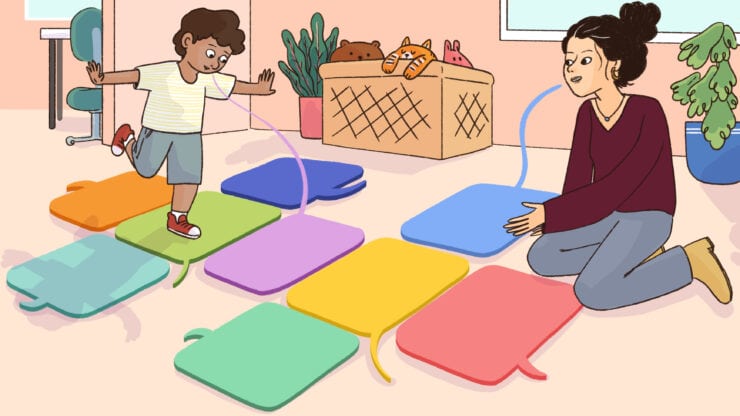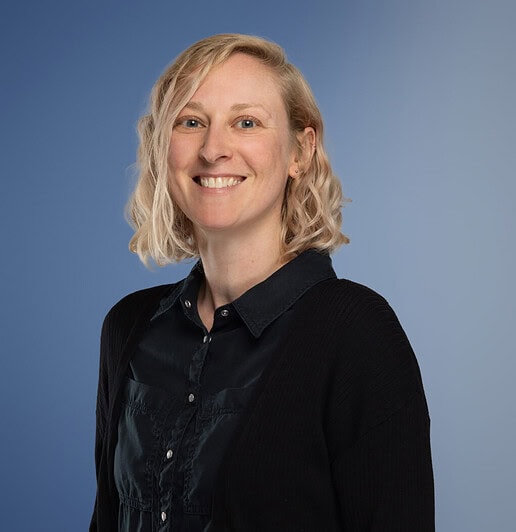The developmental scientist exploring what helps children learn language
Sho Tsuji is showing that there are many paths to a rich language-learning environment

Sho Tsuji researches the role of the social environment in young children’s language learning. Early language acquisition is one of the best predictors of later scholastic achievement, she says, which makes studying this topic so important. Annie Brookman-Byrne finds out more.
“Language is one of the core human capacities shaped by experience.”
Annie Brookman-Byrne: What drew you to this topic, and what questions are you asking in your research?
Sho Tsuji: My own multi-cultural background caused me to wonder how our environment and experiences shape us from early on. Language is one of the core human capacities shaped by experience – this is why I chose it as my field of study. Enriched social environments are advantageous for learning, but young children learn language in highly diverse environments. What forms can rich and advantageous environments take across cultural and linguistic diversity? And how can we formulate and update tools and recommendations for caregivers, with the goal of creating environments in which children can thrive?
ABB: What have you discovered so far about what makes a rich environment for language learning?
ST: I have focused on the role of social interaction, and especially on how children and their interaction partners are mutually responsive. This is a distinguishing feature of active, live interactions, which cannot, for instance, be found when children watch TV. In contrast, a smiling face, which is also an important element of children’s social interaction, can be experienced via passive TV exposure. In the course of experiments using virtual agents to isolate mutual responsiveness from other aspects of social interaction, I have found that mutual responsiveness itself is a powerful cue that supports word learning. In practice, this shows how important back-and-forth interaction with young children is for their learning of words.
ABB: How will your research help children?
ST: A look at development and learning across different environments shows us that there are many different paths through which children can thrive – but also that some paths should be avoided. For instance, there is strong evidence that the quantity and quality of speech inputs are a good predictor of children’s vocabulary, but those inputs might not need to come from adults – an important insight, since in some cultures, children’s main input sources are other children. I hope that my research will encourage caregivers to be flexible and adaptive when considering how best to support their children’s development, while adhering to certain common standards.
“There are many different paths through which children can thrive – but also that some paths should be avoided.”
ABB: Has working in this field changed anything in your personal life?
ST: Conducting research with young children and parenting are similar in some ways – for example, there is the Instagram or textbook version of what you want to do, and then there is reality. My experiences working in this field as well as being a parent have taught me to have modest expectations and to ask myself: Will this work? Can this work? And if not, why not? And actually, that last question – why is something not working as we adults have predicted? – is often one of the most useful questions to ask. In fact, it is what inspired me to move from purely linguistic research to a focus on language acquisition and social factors: I discovered that an experiment in which I had invested a great deal of time and effort was not working simply because it was boring and unnatural for the participating infants.
ABB: What ideas are you most excited about pursuing next?
ST: Recent technological advances have allowed us to collect and analyse data in unprecedented ways. We are now able to track the auditory or visual inputs that children receive over the course of the day and children’s interactions with others. We can also measure relevant physiological or environmental data, such as heart rate or the distance between interaction partners. I am excited to adapt these tools so that I can apply them in many diverse environments. I am also looking forward to extracting sophisticated linguistic and social information from the vast amounts of data that are being collected. These advances will tell us even more about how children first learn language, and ultimately help caregivers provide the best learning environments for their children.
Footnotes
Sho Tsuji earned her PhD conducting cross-linguistic research on early language acquisition at the International Max Planck Research School for Language Sciences at Radboud University in the Netherlands. Her postdoctoral research brought her to the Infant Language Center at the University of Pennsylvania, then to the Laboratoire de Sciences Cognitives et Psycholinguistique at Ecole Normale Supérieure in Paris. She subsequently led the Babylab of the International Research Center for Neurointelligence at the University of Tokyo before returning to the Ecole Normale Supérieure as a CNRS researcher.
This interview has been edited for clarity.

